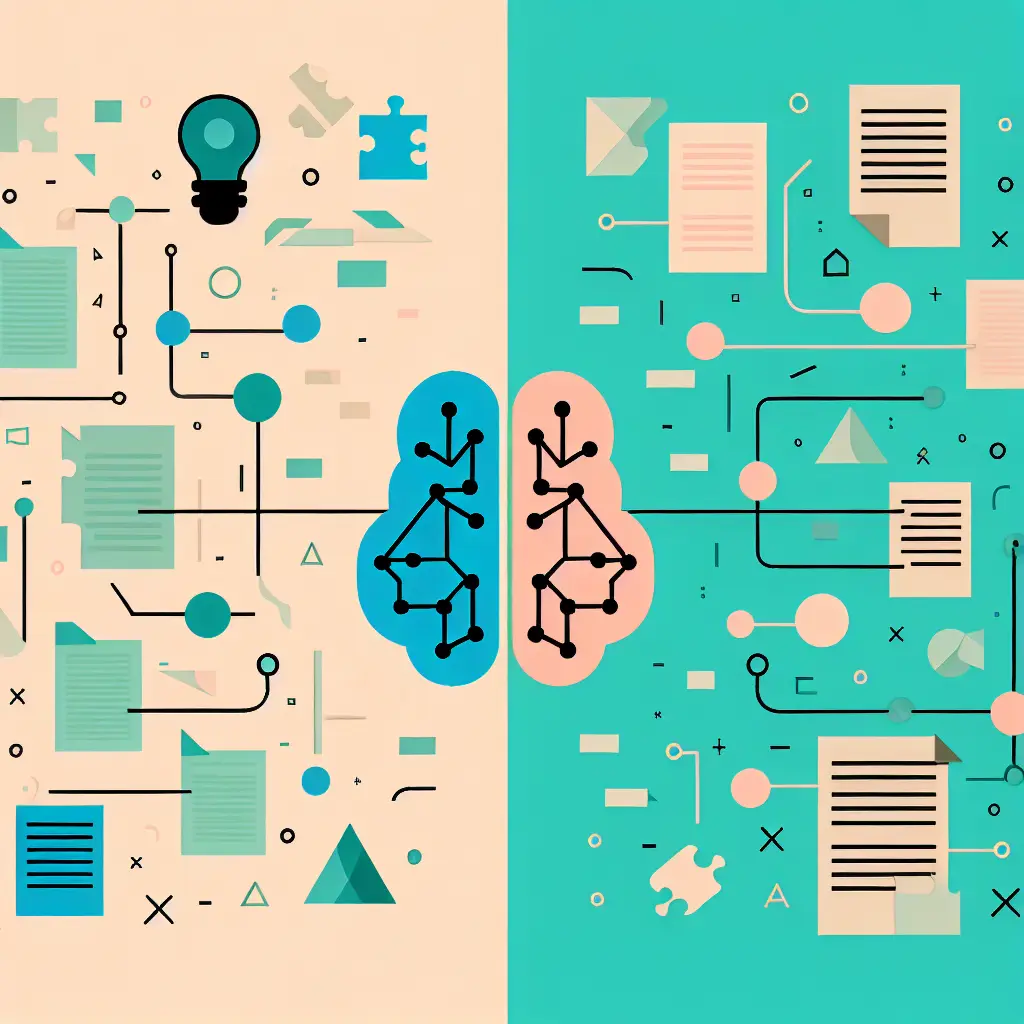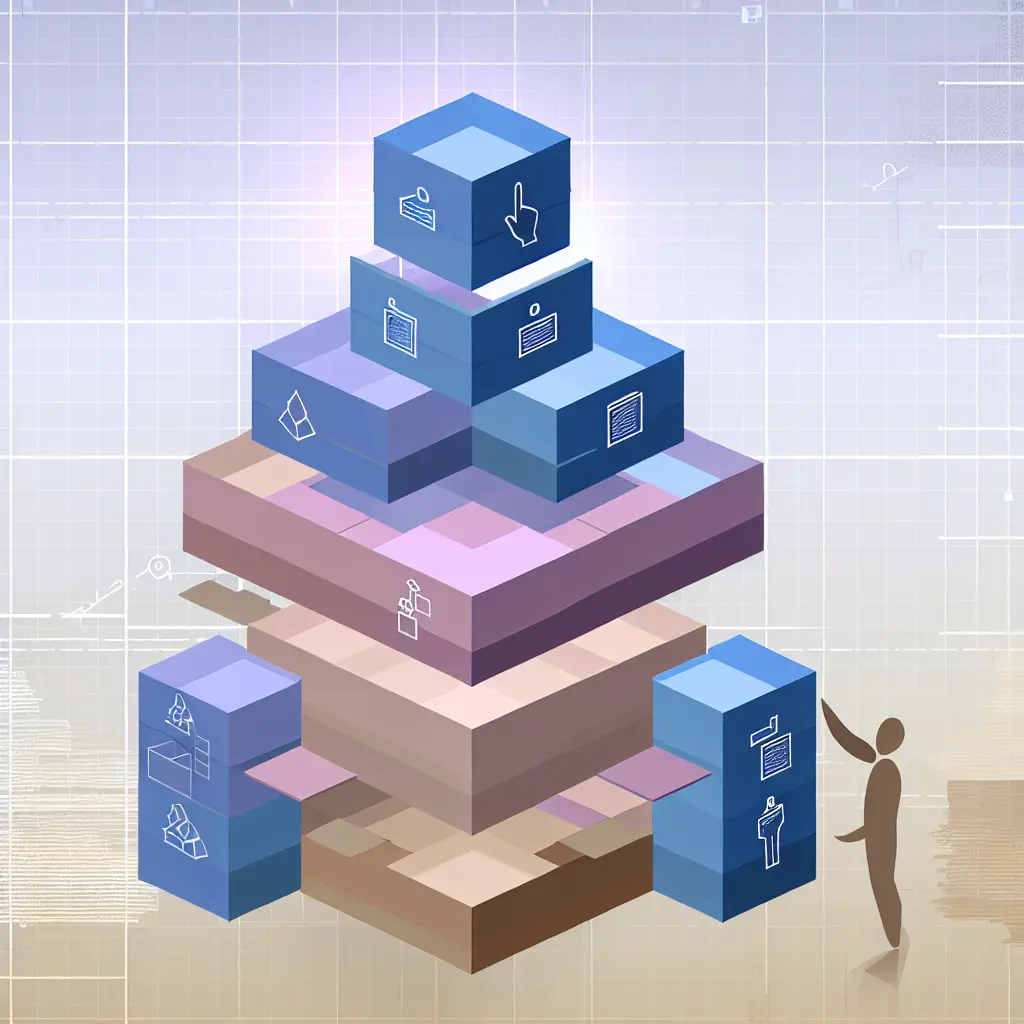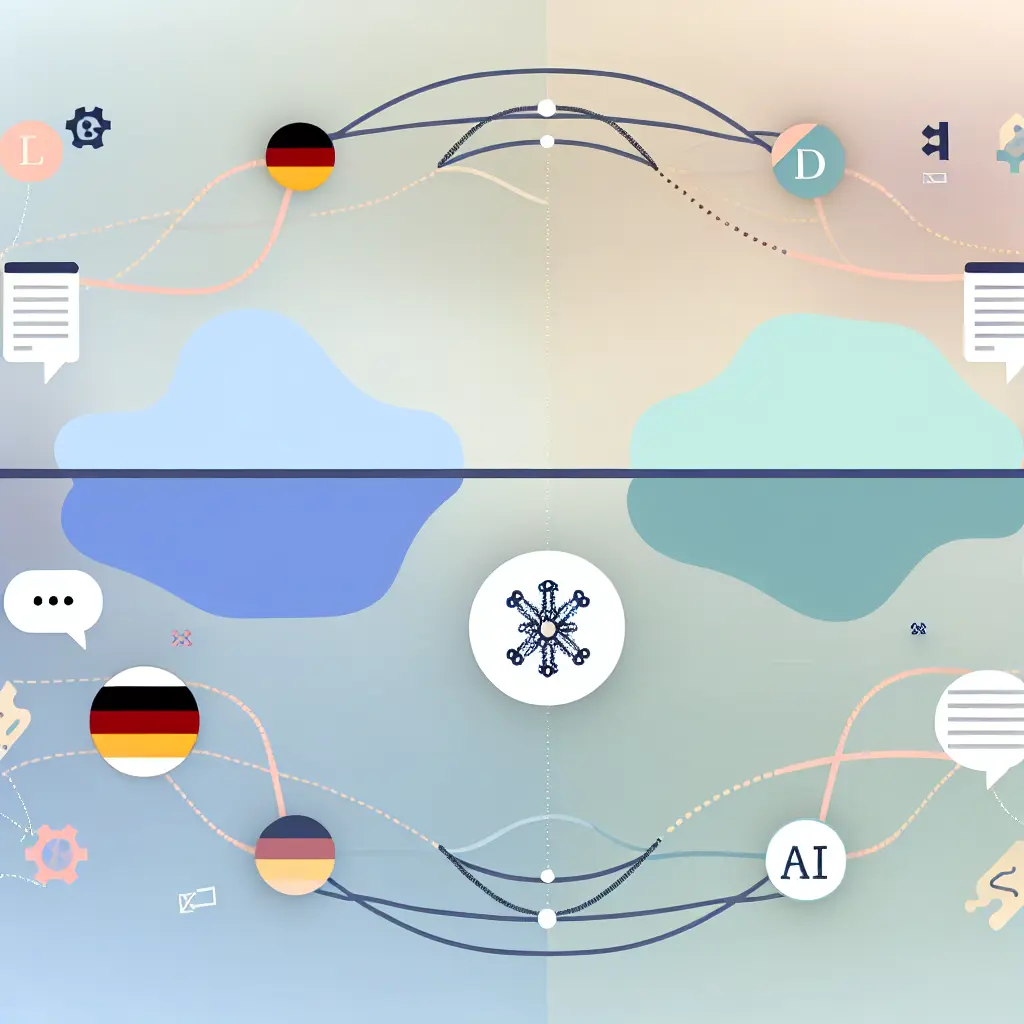Picture this: it’s three in the morning, you’re staring at a half-finished chapter of your dissertation, and your supervisor’s deadline is breathing down your neck. You’ve got pages upon pages of notes, but the structure? Chaotic at best. You know what you want to say, but the words simply won’t come. And then there’s that nagging voice whispering: “Maybe I’m just not cut out for this.”
This nightmare is the daily reality for thousands of doctoral candidates across Germany. Writing a dissertation isn’t just another academic task—it’s a mental marathon spanning four to five years where you’re expected to conduct original research, master complex theories, and produce a 200-400 page manuscript that meets the rigorous standards of German universities. And let’s be honest: nobody ever really taught you how to tackle such a monumental project.
💡 Key Insight: An AI writing assistant for doctoral students in Germany changes everything because it organizes your dissertation structure, breaks through writer’s block, improves argumentation quality, and simplifies multilingual writing—allowing PhD candidates to write up to 40% faster and with greater confidence.
But here’s the good news: a revolution is underway in how we approach academic writing. The rise of AI writing assistants for doctoral students in Germany is transforming the PhD journey from a lonely struggle into a supported expedition. These tools aren’t magic solutions that write your dissertation for you—that would violate academic integrity—but they are intelligent partners that help you find structure, develop ideas, and showcase your expertise.

In this article, you’ll discover why these AI assistants represent a genuine game-changer for doctoral candidates, how they solve concrete challenges, and most importantly: how you can start using them today. Because let’s face it—if technology exists that can help you write smarter, faster, and better without compromising your academic integrity, why wouldn’t you use it?
The Doctoral Challenge in Germany
Pursuing a doctorate in Germany has built a reputation for thoroughness and excellence, but that comes at a cost. According to recent data from the Bundesbericht Wissenschaftlicher Nachwuchs, a PhD trajectory takes an average of 4.5 years in humanities and roughly 4 years in natural sciences. But these numbers tell only part of the story.
The reality? Approximately 30-40% of all started doctoral programs are never completed. That’s nearly half of all ambitious researchers who begin with dreams and passion, but somewhere along the way throw in the towel. The reasons are numerous and complex: lack of supervision, financial pressure, isolation, and—very often—overwhelming mental stress from the enormous writing task ahead.
The Writing Challenge: More Than “Just Typing”
An average German dissertation spans between 200 and 400 pages, depending on the field. That’s not just a thick stack of paper—every word must be supported with sources, every claim critically evaluated, and the entire structure must tell a coherent story presenting original research. For many doctoral candidates, this feels like building a cathedral with only a hammer and some loose stones.
“The hardest part about doing my PhD wasn’t the research itself, but converting all those ideas and data into a readable, logically structured manuscript. I lost months to rewriting and restructuring.”
Then there are the language barriers. While many German doctoral candidates publish in English, they often must also master German for their dissertation or communication with supervisors and committee members. For international PhD candidates—who represent a growing percentage of Germany’s research community—this adds an extra layer of complexity. You must not only master academic writing, but do so in a language that may not be your mother tongue.
Writer’s Block and the Feedback Gap
One of the most frustrating aspects of doctoral work is the feedback cycle. Unlike coursework where you receive weekly or monthly feedback, doctoral candidates often work for months before receiving comments from their supervisor. And when that feedback finally arrives, it can be devastating: “The structure doesn’t work,” “This argument isn’t convincing,” or the dreaded “Start over.”
This delayed feedback creates a vicious circle: you write for months in a certain direction, discover it’s not right, and must then rewrite enormous amounts of work. No wonder so many doctoral candidates struggle with chronic writer’s block—that paralysis that occurs when you don’t know if what you’re writing is even heading in the right direction.

This is precisely where an AI writing assistant for doctoral students in Germany makes a fundamental difference. Instead of waiting months for feedback, you get immediate insights into your text’s structure, coherence, and quality. It’s like the difference between navigating without GPS versus with real-time route updates—both get you to your destination, but one involves far more detours and frustration.
The AI Revolution in Academic Writing
Over the past two years, we’ve witnessed explosive growth in the adoption of AI writing tools within academia. ChatGPT captured global attention in November 2022, but since then an entire ecosystem has emerged of specialized tools designed specifically for academic work. And doctoral students in Germany? They’re at the forefront of this revolution.
According to a 2024 study by the Deutschen Hochschulverband, more than 60% of PhD candidates in Germany regularly use AI tools in their research or writing process. That percentage was barely 15% two years ago. This exponential growth isn’t coincidental—it reflects a fundamental shift in how academic work is produced and evaluated.
Why German Doctoral Candidates Are Switching En Masse
German PhD candidates have specific needs that general AI tools like ChatGPT can only partially fulfill. They don’t just need help writing text, but especially with:
- 🏗️ Structure development: Creating logical chapter divisions and a red thread throughout the entire dissertation
- 💬 Strengthening argumentation: Sharpening claims and building convincing academic reasoning
- 📚 Literature processing: Integrating dozens of sources in a way that’s critical and synthesizing, not merely descriptive
- ✍️ Language correction and style: Professional academic language in both German and English, with correct grammar and word choice
- 📖 Reference management: Automatic citations in various styles (APA, Chicago, Harvard) that remain consistent throughout the document
These are precisely the areas where a specialized AI writing assistant for doctoral students in Germany makes the difference. Platforms like tesify.online aren’t designed as general chatbots, but as intelligent writing partners that understand what academic writing requires.
⚡ Why Now? The Perfect Storm
Three factors converge to accelerate this trend: (1) AI technology is finally good enough to understand and improve nuanced academic text, (2) the mental health crisis among doctoral candidates demands new forms of support, and (3) universities are beginning to recognize that AI literacy is an essential skill for future academics.
How Universities Are Responding
An interesting question occupying many doctoral candidates: what’s the official policy on AI use? Here it gets nuanced. German universities like TU München, Freie Universität Berlin, and Heidelberg Universität have now published guidelines that don’t prohibit AI use, but do require transparency.
The consensus? AI as a tool is permitted, AI as a replacement is not. You may use AI to improve your text, find structure, or develop ideas—as long as the end result remains your own intellectual work and you’re transparent about your usage. Think of AI as a highly advanced spell-checker or virtual writing coach, not as a ghostwriter.
This pragmatic approach has sent a signal: use AI smartly, not slavishly. And for doctoral candidates struggling with deadlines and mental pressure, this means they finally have access to tools that can genuinely help without compromising their academic integrity. For more insight into which tools best fit academic work, check out this comprehensive guide about the best AI writing tools for dissertations in 2025.
Five Transformations Through AI Writing Assistance
Now that we’ve mapped the landscape, let’s get concrete. How does an AI writing assistant for doctoral students in Germany actually transform the writing process? Here are five fundamental transformations I repeatedly witness among doctoral candidates who adopt these tools.
From Chaos to Structure
Every doctoral candidate’s biggest fear? That paralyzing moment when you look at your research notes and have absolutely no idea how to organize all this into a coherent narrative. I’ve spoken with doctoral candidates who lost six months rearranging chapters because they lacked clear structure from the beginning.

An AI writing assistant solves this by functioning as an architectural blueprint for your dissertation. You input your research question, main findings, and theoretical framework, and the AI proposes a logical chapter structure—complete with subsections, transitions, and narrative arcs. It’s not perfect from day one, but it gives you a starting point instead of a blank screen.
Think of it as the difference between assembling a puzzle with the picture on the box versus without. Both are possible, but one is a pleasant challenge and the other pure frustration. Platforms like tesify.online go even further by offering a smart guide that walks you step-by-step through each chapter, so you never feel lost in your own manuscript.
For an in-depth explanation of how you can deploy AI for a watertight structure, check out this article about thesis structure with AI for humanities scholars—the principles are directly applicable to dissertations.
Overcoming Writer’s Block, Boosting Productivity
Writer’s block isn’t just “not feeling like writing.” It’s a psychological barrier where perfectionism, fear of failure, and uncertainty form a toxic mixture that paralyzes you. I know doctoral candidates who couldn’t get a single word on paper for weeks, simply because they didn’t know if it would be “good enough.”
Here AI does something brilliant: it lowers the threshold to begin. You don’t need to write perfect sentences immediately—you can start with bullet points, loose thoughts, or even broken sentences. The AI helps you transform this raw material into readable text. It’s like having a personal writing coach who says: “It doesn’t need to be perfect, let’s just start.”
Studies show that doctoral candidates using AI support report 30-40% higher writing productivity—not because the AI does the work for them, but because mental barriers become lower. You write more because you’re less afraid to fail. And that’s golden in a process where momentum is everything.
Elevating Quality
Here’s where it gets really interesting. An AI writing assistant isn’t just a tool for writing faster—it’s primarily a tool for writing better. Consider three levels:
- Language correction: Grammar, spelling, word choice—the basics you’d expect from an advanced spell-checker
- Style improvement: Rewriting sentences for clarity, refining complex academic language without losing content
- Argumentation strengthening: This is where the magic happens—the AI can suggest where your argument is weak, where you need more evidence, or where logical gaps exist
That third level is what distinguishes an AI writing assistant from traditional writing tools. It’s not a passive spellcheck that places red lines—it’s an active reader that critically evaluates your text and provides constructive feedback. Of course, the final judgment remains yours, but it gives you a “second pair of eyes” available 24/7, without judgment and without being offended if you don’t follow its advice.
Faster and More Critical Literature Processing
Doctoral candidates often drown in literature. You must read, synthesize, and integrate hundreds of papers into your own argument without falling into a boring “Author X says this, Author Y says that” enumeration. This is perhaps the most difficult part of academic writing—it requires not just understanding, but critical synthesis.
Modern AI assistants can help by:
- 📊 Identifying patterns in what different authors say—where do they agree, where do they differ?
- 🔍 Spotting gaps—which aspects are underexplored in current literature?
- 🔗 Making connections between your research and existing theories or studies
- ✅ Generating citations in the correct format (APA, Chicago, MLA, etc.) without manual error-prone labor
This doesn’t mean the AI writes your literature review—that would be academic theft. But it does mean you can navigate through mountains of literature much faster and direct the real intellectual labor (critical thinking, original insights) to places where it truly counts.
Simplified Multilingual Writing
For international doctoral candidates in Germany—or German PhD candidates who must publish in English—language is often an invisible threshold. You know what you want to say, but the right words won’t come. Or worse: you write something grammatically correct but sounds like a non-native speaker.

A good AI writing assistant for doctoral students in Germany functions as a multilingual bridge. You can:
- 💬 Write in your native language and have it translated to academic German or English
- 🎯 Respect nuances and academic conventions per language (German academic texts are, for example, more formal than English ones)
- 🔄 Switch between languages without losing context—handy for German dissertations with English papers
This not only reduces stress, it democratizes access to academic excellence. Language should never be a barrier to brilliant research—and with the right tools, it no longer needs to be.
Real-World Case: Doctoral Candidate in Berlin
Theory is nice, but let me tell you the story of Matthias K., a doctoral candidate in political science at Freie Universität Berlin. His situation exemplifies what many PhD candidates experience—and how an AI writing assistant can be a game-changer.
The “Before” Scenario
Matthias was in his third year when I met him. He’d spent two years collecting data for his research on European migration policy, but the writing was going… not well. His desk was buried under post-its and printouts, he had three different Word documents with overlapping chapters, and his supervisor had just rejected his second version of chapter 2 with the comment: “The structure is unclear and the argument gets lost.”
“I felt completely lost,” Matthias recounts. “I knew what I wanted to say, but I couldn’t find a red thread. Every time I wrote, it felt like I was going in circles. I seriously considered quitting.”
His productivity had plummeted: he was writing an average of 200-300 words per day, and even those words felt forced and incoherent. He spent more time rewriting than making progress. The classic doctoral candidate problem: lots of energy, little result.
The Intervention
On a colleague’s recommendation, Matthias started with tesify.online, a platform specifically designed for academic writing. He didn’t start with his entire dissertation—that would be overwhelming—but with one concrete chapter: his theoretical framework.
The first step? He input his research question, main theories, and planned structure. The AI generated a detailed outline with logical subsections and suggestions for transition sentences. “It was like someone had finally arranged the puzzle pieces for me,” says Matthias.
Next, he used the smart revision feature to restructure his rough drafts—which he’d written earlier in desperation. The AI suggested where arguments could be stronger, where evidence was missing, and where sentences were too complex. He retained complete control but finally had immediate feedback instead of waiting months for his supervisor.
The “After” Scenario
Six months later, Matthias is a different person. He’s completed four of the eight planned chapters—something that previously seemed unattainable. His writing productivity? 800-1000 words per day, a threefold increase. But more important than the numbers: his confidence has transformed.
“The AI doesn’t write for me—that’s a misconception. But it gives me a skeleton I can build on, and it functions as a critical reader who’s always available. I no longer feel lost. I know that what I’m writing is logical, well-structured, and academically solid.”
The concrete time savings? Matthias estimates he writes 40% faster and spends 60% less time restructuring and rewriting. That translates to months—possibly even a year—less time until he can defend. For someone financially dependent on his PhD contract, that’s not just academically relevant, it’s life-changing.
The Future of Doctoral Work with AI in Germany
We stand at the beginning of a fundamental transformation in how academic work is produced, evaluated, and valued. The question isn’t whether AI becomes a permanent fixture in academia, but how we’ll integrate these tools ethically and effectively. Let’s look five years ahead.
AI Becomes Standard in Supervision
By 2030, I predict that every university in Germany will have institutional licenses for AI writing assistants, just as they now provide access to libraries and statistical software. It simply becomes part of the research infrastructure—not because it’s “hip” or “trendy,” but because it delivers proven results in student success and wellbeing.
Supervisors will no longer refer doctoral candidates only to books and papers, but also to AI tools that can help them. New supervision models emerge where mentors focus on high-level intellectual guidance—conceptual questions, methodological choices, interpretation—while AI provides practical writing support.
New Evaluation Criteria
This is where it gets really interesting. If everyone has access to tools that can produce grammatically perfect, well-structured text, what still makes an excellent dissertation? The answer: originality of insight, depth of analysis, and creativity in problem formulation.
Universities will need to adjust their evaluation criteria. Instead of assessing whether you “can write well” (which increasingly becomes a technical skill supported by AI), committees will focus on:
- 🧠 Conceptual innovation: Do you bring new perspectives or theoretical frameworks?
- 🔬 Methodological rigor: Is your research design robust and well-justified?
- 💡 Critical synthesis: Can you connect complex literature in new ways?
- 🎯 Relevance and impact: Why does your research matter to the field or society?
This is actually a democratization of academia—students who aren’t naturally the strongest writers but are brilliant thinkers can now also excel, because technical writing skill is no longer the biggest barrier.
Ethical Questions
Let’s address the elephant in the room: when does AI use become academically improper? This discussion currently rages through universities worldwide, and the answer is more nuanced than “yes” or “no.”
The emerging consensus:
🚫 Not Acceptable:
- Having AI write entire sections you present as your own work
- Not disclosing that you used AI (lack of transparency)
- Relying on AI for analysis or interpretation without your own critical judgment
✅ Acceptable:
- Using AI for structure development and outline creation
- Getting revision suggestions and applying them critically
- Language correction and style improvement (as you would use spell-check)
- Automating literature summarization and citation management
The key is transparency and intellectual ownership. If you conceived the ideas, did the research, and drew the conclusions—and AI only helped communicate that clearly—then there’s no ethical problem. Think of AI as a highly advanced writing coach, not as a co-author.
Skills That Remain Important
A frequently heard concern: “If AI does the writing, what do I still need to learn?” The answer may surprise you: precisely the skills AI cannot replace become crucial differentiators.
In the future, doctoral candidates who excel will be those who demonstrate mastery in:
- Critical thinking: The ability to formulate research questions, justify methodological choices, and interpret data
- Creativity and innovation: Seeing new connections, developing original perspectives
- Ethical judgment: Knowing when to accept or reject AI suggestions
- Prompt engineering: Communicating effectively with AI—yes, this becomes an academic skill!
- Interdisciplinary synthesis: Connecting ideas from different fields in ways AI cannot anticipate
Doctoral work remains an intellectual expedition—AI only changes the tools you carry on that journey. You still navigate yourself; you just have a better map and a more reliable compass.
Quick Q&A: Can I Use AI for My Dissertation?
Q: Is it allowed to use AI tools for my dissertation in Germany?
A: Most German universities permit AI use as long as you’re transparent about your usage and it doesn’t lead to plagiarism or deception. Always check your university’s specific policy and discuss it with your supervisor. Document how you used AI (for example, in a methodological appendix).
Q: Does text that AI has improved count as my own work?
A: Yes, if you generated the original ideas, conducted the research, and made the intellectual contributions. AI that helps refine your expression is no different than using a spell-checker or getting feedback from a colleague. The work remains yours if the thinking is yours.

Leave a Reply